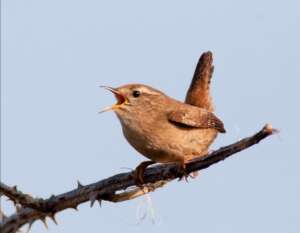January was remarkably mild with early-morning frost on only three days. It rained on 14 days but most of it was light and patchy, being concentrated in the first half of the month. Accordingly, the water-table rose by 6.5 cm in the first two weeks but fell by 1 cm in the next fortnight. The unseasonal conditions resulted in some remarkable insect sightings. Pete Kinsella emailed on 15th to say that he had found a Green Shieldbug sunning itself on Ivy at Crosby and then as many as six on the 19th. These were the brown hibernation form but should not have been out and about in January. Even more surprising, I was struggling up the steep sandy slope to the Devil’s Hole on 29th when I spotted a familiar shape on the sand. It was a large sand-wasp. Expecting it to be dead, I picked it up only to discover it was still alive, despite having lost its black-and-red abdomen. I took it home and identified it as a Hairy Sand Wasp Podalonia hirsuta, a familiar summer duneland species. Online research confirmed that mated females often over-winter. Perhaps this one ventured out in the mild weather and was attacked by a bird. I hesitate to make false accusations, but there was a perky male Stonechat flying from bush to bush in the Devil’s Hole.
(more…)


